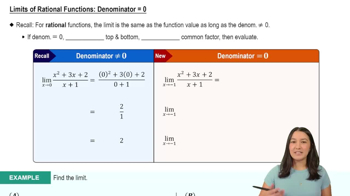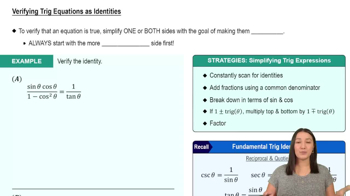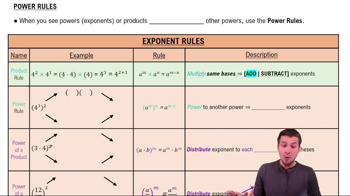Finding Limits
For the function f whose graph is given, determine the following limits. Write ∞ or −∞ where appropriate.
h. lim x → ∞ f(x)
 Verified step by step guidance
Verified step by step guidance Verified video answer for a similar problem:
Verified video answer for a similar problem:



 6:47m
6:47mMaster Finding Limits Numerically and Graphically with a bite sized video explanation from Patrick
Start learning